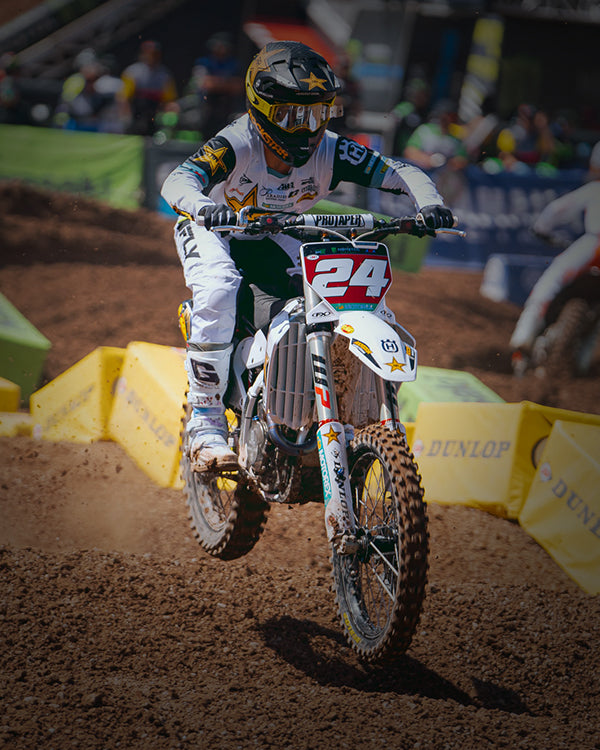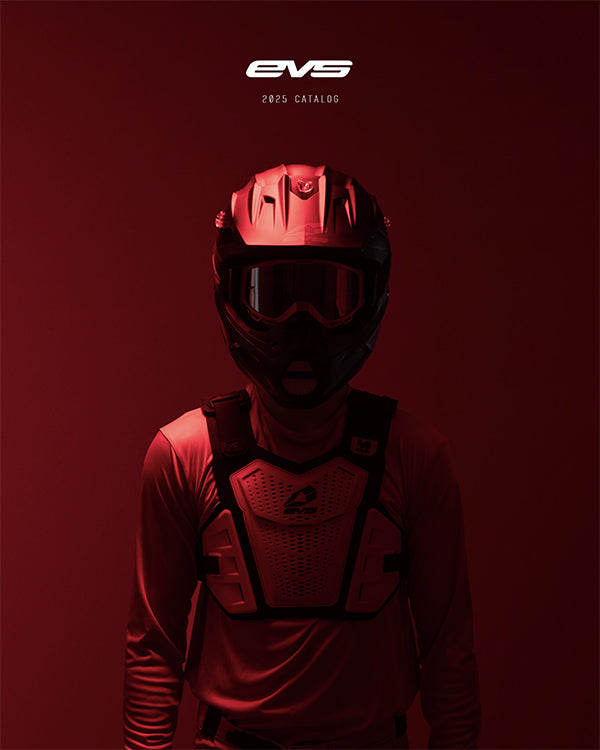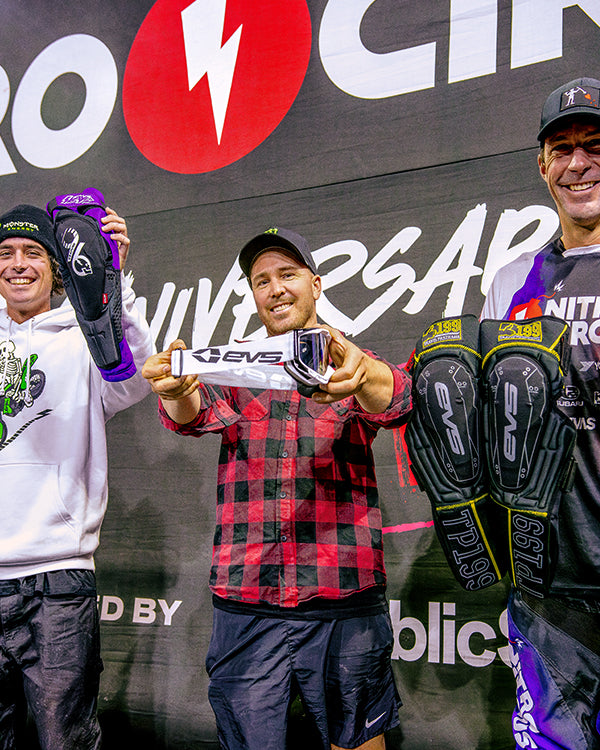Can you tell me something about CE/European ratings for back protectors and other armor?
Here’s a short explanation of the rating system used to measure the effectiveness of motorcycle armor in absorbing and withstanding impacts.

The “EN” stands for “European Norm.” You might also notice armor listed as “CE”. The letters “CE” are the abbreviation of the French phrase “Conformité Européene” which literally means “European Conformity”. The term initially used was “EC Mark” and it was officially replaced by “CE Marking” in the Directive 93/68/EEC in 1993. “CE Marking” is now used in all EU official documents. All of this has to do with the European motorcycle safety standards. America has unofficially adopted these standards, but they are not required by law for street use. In contrast, to ride a motorcycle in Europe, you have to have protective apparel that meets these standards.
For North America, the only time you need CE- and/or EN-rated apparel is when you are on a race track. Also, since each track has different standards, the rating of apparel you need varies depending on which track you ride on. The same type of difference occurs with helmet requirements. For those states with helmet laws, you only need a DOT-approved helmet to ride on the street, but some tracks require the latest Snell-m rating to ride. Many tracks are now accepting ECE rated helmets as well. You will want to check with the track beforehand.
The armor manufacturers are starting to move away from the European standards, however, and are going with an “all world” or international standard. This is because Asia and Australia have different standards than Europe or America. An all-world standard will enable you to use the same gear no matter where you are in the world.
| The term normally implies that the manufacturer tested the whole or just a piece of a garment within their own facility that might meet certain standards. However, the garment is not necessarily tested in a certified testing facility to meet officially accredited standards. | |
| This is more secure, as it states that the garment samples were tested in certified testing facilities. In this case, you need to find out which part of a garment was tested | |
| This means several parts of a garment were tested in certified facilities and are accredited to meet or surpass the required standards in all zones |
OK—here’s the “code” for the rating numbering system:
Let’s take a rating of “EN1621-2:2014” The numbers following the “EN” are an indication of what the protector is rated for. The “1621” indicates the item is rated for motorcycle use and the “-2” tells us the area of protection. A protector labeled EN1621-1:2012 is going to be for pretty much anywhere but the back. A protector labeled EN1621-2:2014 is going to be for back protection only. There are two levels of CE protection: CE level 1 and CE level 2 protectors. Typically, you only need a CE level 1 for most tracks. However, some more advanced and higher speed track schools or races require CE level 2.
Finally, the “2014” refers to the year when the standard was implemented. The standards have to be reviewed or updated every few years.
Level 1 protectors: The maximum transmitted force must be below 18 kN, and no single value shall exceed 24 kN Level 2 protectors: The maximum transmitted force must be below 9 kN, and no single value shall exceed 12 kN.
A lesser used rating you may see sometimes included with the EN1621 rating is “EN340:2003.” The “340” is just a general standard that is not specific to a specific sport or job. So when you see both the 340 and 1621 on a piece of armor, the 340 is really pointless because the 1621 already covers all the requirements for the 340.
The important things you want to look for is the CE level 1 or CE level 2. The CE level 2 is going to offer you the best impact protection. With back protectors, you want to make sure the shape and size of the back protector. A CE level 2 back protector is not going to do you any good if you can’t fit it in your jacket or if the pocket is too big and it moves around on you.
Here’s a further breakdown of the general labeling requirements for protective clothing using the EN340 standard:
EN 340:2003 – Protective clothing – General requirements
- Mark identifying the manufacturer
- Product identifying mark
- Size or size range designation
- EN ### – specific Standard number
- Pictogram – for specific hazard protection, plus performance levels, where applicable
- Care labeling. May include a maximum number of cleaning cycles (max ## x)
- Single use PPE to be marked “DO NOT RE-USE”
For the EN1621 standard, the labeling requirements are as follows:
EN 1621-1:2012 – Motorcyclists’ protective clothing against mechanical impact. Impact protectors
Type of protector:
S – Shoulder
E – Elbow
H – Hip
K – Knee
K + L – Knee + Upper and Middle Tibia
L – Front of leg below a K protector
KP –Knuckle Protection
Plus an indication of the covered area:
A – reduced coverage for specialized applications
B – normal coverage
EN 1621-2:2014 – Motorcyclists’ protective clothing against mechanical impact. Motorcyclists back protectors
Type of protector:
B or FB – Full back protector (central back and scapuae)
CB – Central Back
L or LB – Lumbar protection only
Performance level 1 or 2
Abrasion resistance level 1 or 2
Impact cut resistance level 1 or 2
Burst strength level 1 or 2
Level 2 is more protective in all cases
89/686/EEC – Personal protective equipment
EN 13634 – Boots
EN 12594 – Gloves
EN 1621-1, EN 1621-2, and EN 1621-3 – Limb, Back and Chest
EN 13595-1 – Protective clothing for professional motorcycle riders. Jackets, Pants and One or Two Piece Suits
Here is a break down of a CE label and what to look for:

1. This pictogram indicates that this is a protective equipment for bikers (ISO 7000-2618)
2. Category and type of protection (detail above)
3. Low temperature impact test (-10 ° C) validated
4. High temperature (+40 ° C) impact test validated
5. Performance level (1 or 2)
As a reminder, an EN 1621-1 certified hull transmits less than 24 kN at level 1 and less than 12 kN at level 2. With regard to extreme temperature tests, an empty box indicates that the protection has not validated the optional test but remains certified. To be clear, the different types of protection are indicated by letters (type A and type B correspond to the width of the shell).
CE certified motorcycle apparel made after 2018 will have a “Class” section in the CE label or marking. The most recent technical standard by which to obtain the CE Certification of protective motorcycle apparel is UNI PrEN 17092, which identifies 5 classes of protectiveness: AAA, AA, A, B and C. These protection classes differ depending on the type of usage and levels of protection:

| Class AAA | (prEN 17092-2:2017) Is the highest level of protection with which to take on the highest level of risk. Garments classified as such offer maximum protection, but are also heavier and less comfortable to use. |
| Class AA | (prEN 17092-3:2017) Is the second highest level of protection with which to take on the wide range of risks that motorcycle riding presents. |
| Class A | (prEN 17092-4:2017) Is the third highest level of protection. Protectiveness is less than the previous classes, but garments are lighter and more comfortable to wear on a daily basis. |
| Class B | (prEN 17092-5:2017) Where the level of protection against abrasion is equivalent to Class A, but without the impact protectors. Garments in this class offer abrasion resistance in line with that of level A but are not equipped with protectors. Jeans without protection fall into this class for example. |
| Class C | (prEN 17092-6:2017) In the least protective class, we find so-called “protection containers” that resist impact but not abrasion (underwear with integrated impact protectors for example) |
The performance requirements, to assign a protection class, are based on specific performance requirements for “risk category zones” of the garment, which are defined according to the likelihood that the area will be subject to mechanical stress, in the event of an accident. There are three zones, as follows.







